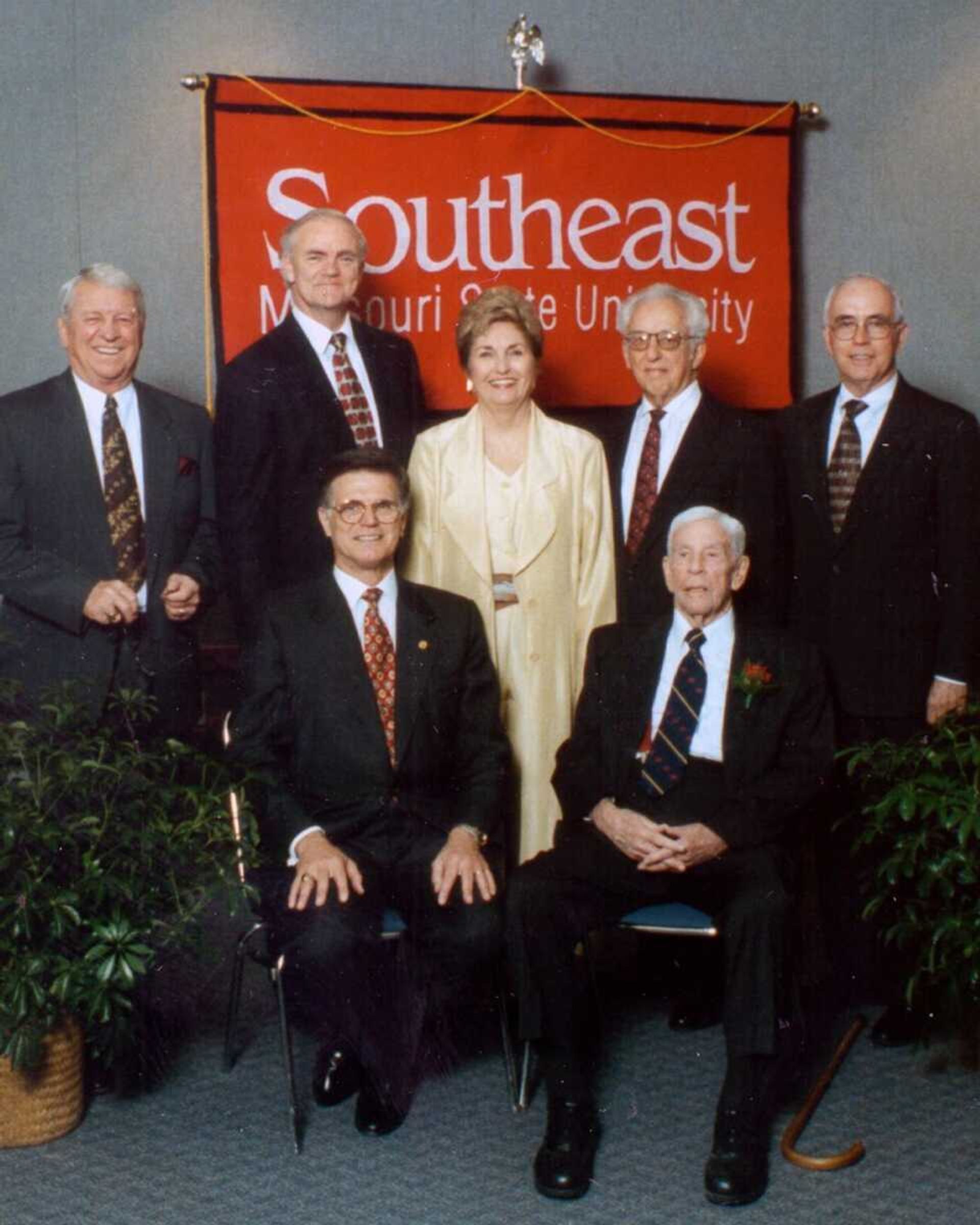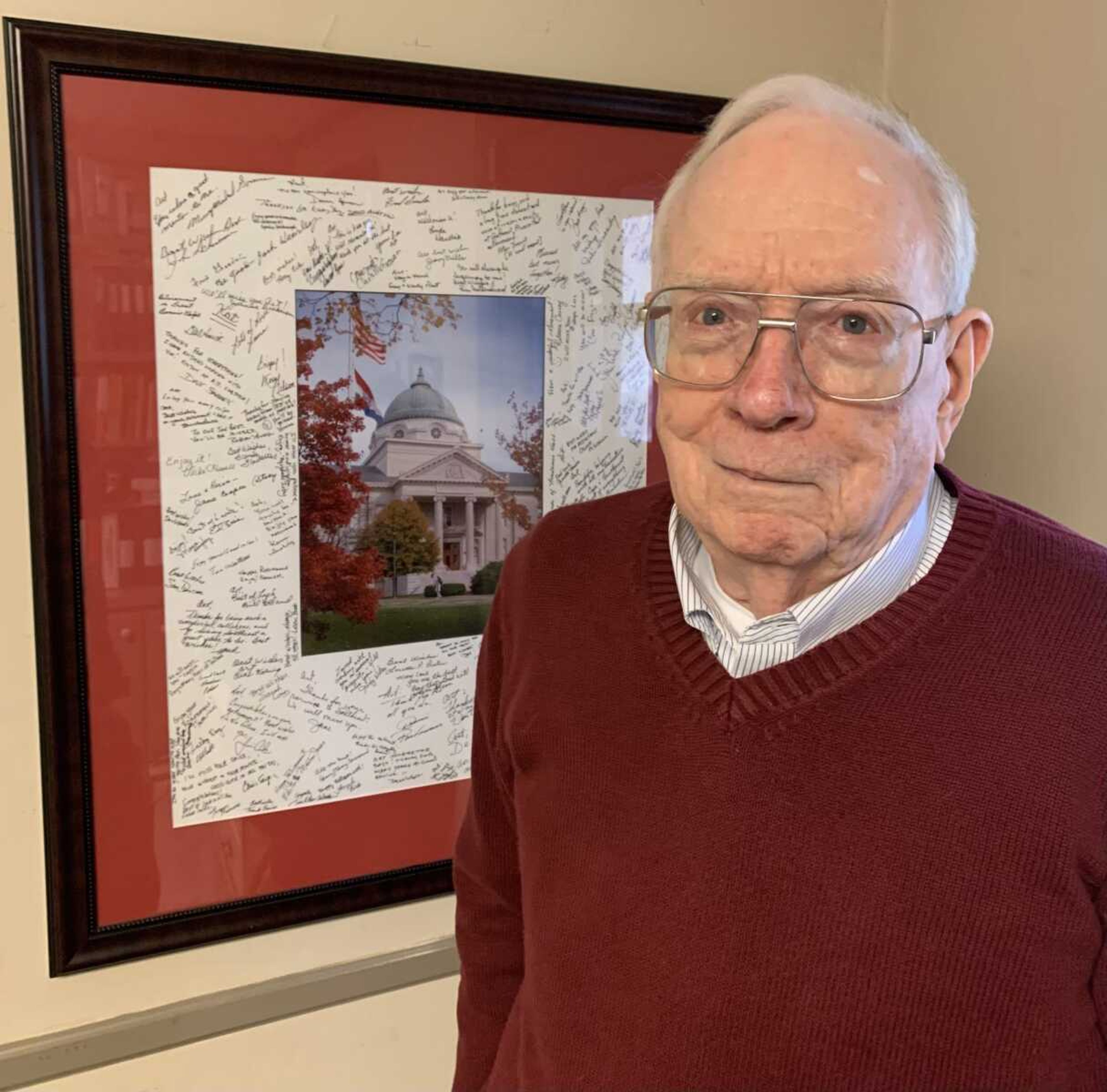Wallhausen fondly remembers serving six SEMO presidents
Southeast Missouri State University has had 18 presidents in its 150-year history, and Art Wallhausen served as assistant to six of them. Wallhausen first came to SEMO in 1984 as the coordinator of the university's News Bureau. He had been the editor of the Enterprise-Courier newspaper in Charleston, Missouri, which was owned by his family...
Southeast Missouri State University has had 18 presidents in its 150-year history, and Art Wallhausen served as assistant to six of them.
Wallhausen first came to SEMO in 1984 as the coordinator of the university's News Bureau. He had been the editor of the Enterprise-Courier newspaper in Charleston, Missouri, which was owned by his family.
"I guess I sort of had a midlife crisis in my 40s and decided I wanted to do something else," Wallhausen said. "Fortunately, my wife agreed to come with me."
In 1986, Bill Stacy, SEMO president from 1980 through 1989, needed an assistant and picked Wallhausen.
"Out of the blue, Stacy came to me and said, 'I need an assistant and you're it.'" Wallhausen said. "He said I would keep doing the News Bureau job, but I had to be his assistant, too."
Wallhausen said he never had a formal job description as assistant to the university's presidents.
"It was an 'other duties as assigned' job. I just had to make it my own," Wallhausen said.
He said being a university president's assistant doesn't have much job security because often a new president coming in will bring their own assistants or want to make changes. Wallhausen credits his knowledge of how SEMO works that led to six presidents keeping him on.
"It's useful to new presidents coming in to have someone who knows the operations of the institution, knows where the bodies are buried, that sort of thing," Wallhausen said. "I was very lucky that each new president kept me on all the way till I retired in 2008."

Wallhausen said one of his main duties was running interference for the presidents.
"I got to be sort of the ombudsman for the university," Wallhausen said. "People might come in with complaints or want to talk about a problem and often the president would be gone or too busy, so my job was to listen and try to take care of it without bothering the president."
He said some presidents didn't want to be associated with any bad news regarding the university, so he was tapped to talk to the media.
"So, the deal was I would be the spokesperson for the university," Wallhausen said. "... I kept a blue blazer in our coat closet to put on when the TV trucks came to my front door."
He said whenever there was a crisis on campus in the middle of the night, it wasn't the president who got called, it was him, and he would decide whether they should call and wake up the president.
"It was my job to keep things running smoothly," Wallhausen said." I was a sounding board for the vice presidents when they wanted to know the president's mood that day."
Wallhausen said all the presidents he worked for were different and he had to adjust to each new president's preferences. He said when he first started, he tried writing speeches for the president, but Stacy never used them.
"He had been a speech communication teacher, so he had no trouble talking on any subject. He just winged it," Wallhausen said. "Bob Foster (1989) was the same way. So, I got used to that, but then Kala Stroup became president (1990 through 1995), it was a week before commencement and she said, 'Where's my script?' So, I had to scramble a bit to write a script for her."
Wallhausen said his favorite was Kenneth Dobbins, president from 1999 to 2015, because he was the longest tenured president he served under.
"We were friends before he became president," Wallhausen said. "He was executive vice president under Stroup and so we were on the same team, sort of at the same level, so we could commiserate with each other when there were problems. When your boss is your friend, that's got to be the ideal situation."
Wallhausen said being the president's assistant is the best job in higher education because he got to be involved in "all the action" and sometimes even got to contribute to decisions being made. He said some of his favorite memories are the successes he was a part of. He called himself a "bit player", but said he was proud to be part of some great team efforts over the years.
Some of the university's accomplishments Wallhausen participated in were the decision to move to a Division I school, the Show Me Center and the River Campus being built and the renovation of Academic Hall.
Wallhausen said he is most proud of two suggestions he made that were put into action.
"In my job, you don't make many long-lasting contributions to the university," Wallhausen said. "I had two original ideas that are still with us today."
Wallhausen said he was the one to suggest the name of Carnahan Hall.
"I told Dobbins we should name it for the father of Mel Carnahan, who was Missouri's governor at the time," Wallhausen said. "I thought it might help with budget negotiations."
Wallhausen's other suggestion was making KRCU Radio an NPR affiliate station.
"At the time, KRCU was a 10-watt student operated station playing music chosen by students. You couldn't get the signal much beyond the Cape city limits at that time," Wallhausen said. "I had been told SEMO would never be considered a significant university unless it had a Public Radio station. So, I passed that on to Bill Stacy and he thought that was a good idea, and he found the money, and that's how KRCU first became affiliated with NPR."
Wallhausen said he has fond memories of his years at SEMO and all the presidents he worked for.
"I liked them all. They were good friends. They treated me nicely. It was a great job," Wallhausen said.
Connect with the Southeast Missourian Newsroom:
For corrections to this story or other insights for the editor, click here. To submit a letter to the editor, click here. To learn about the Southeast Missourian’s AI Policy, click here.










